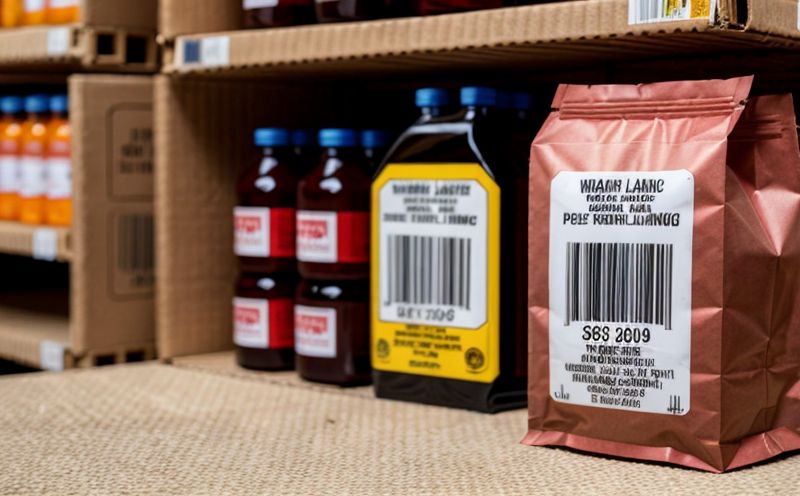When it comes to toy packaging and warning labels, ensuring compliance with international standards is paramount. This ensures the safety of children and the general public while also protecting manufacturers from potential legal issues. The testing process encompasses a wide range of procedures designed to evaluate both the physical integrity of the packaging as well as the clarity and accuracy of warnings printed on the label.
The packaging must be robust enough to protect the toy during shipping and handling, yet flexible enough to allow for easy opening once received by the consumer. This requires careful consideration of materials used, thicknesses, and design elements that might impact durability or ease of use. On the other hand, warning labels need to be clear, concise, and easily understandable. They must comply with regulatory requirements and provide sufficient information regarding potential risks associated with the toy.
The testing process typically involves mechanical strength tests on different parts of the packaging such as flaps, seams, and closures. These tests ensure that the package can withstand normal handling conditions without tearing or breaking open prematurely. Additionally, colorfastness tests are conducted to verify that any ink used in printing does not bleed onto other surfaces during transport or storage.
For warning labels specifically, legibility checks form an integral part of the evaluation process. These tests measure factors like font size, contrast between text and background, and overall visibility under various lighting conditions. Label placement is also critical; it should be positioned in a way that draws attention without being intrusive or misleading.
Furthermore, manufacturers often conduct consumer usability studies to gather feedback on how easy it is for users to follow the instructions provided by the warnings. This helps identify any potential issues early on and allows for necessary adjustments before products reach market shelves.
In summary, comprehensive packaging and warning label testing plays a crucial role in ensuring product safety and regulatory compliance across all markets. By adhering strictly to industry best practices and international standards, laboratories can deliver reliable results that instill confidence among stakeholders involved at every stage of production.
Applied Standards
| Standard | Description |
|---|---|
| ISO 817:1985 | Test methods for determining the resistance of paper, board, and cardboard to puncture. |
| ASTM D3742-07 | Standard test method for tensile properties of multi-ply papers, boards, and other layered materials by use of a constant rate of elongation. |
| EN 1695:2008 | Test methods for determining the resistance to tear propagation of paper and board materials used in packaging. |
| IEC 62103-1:2014 | Standard test method for measuring the colorfastness properties of printed labels on plastic toys under simulated outdoor conditions.
| Standard | Description |
|---|---|
| ISO 9712:2012 | Non-destructive testing - Qualification and certification of non-destructive testing personnel. |
| ASTM F886-15a | Standard test method for measuring the flammability properties of textiles used in children's articles, including stuffed toys. |
| EN 71-3:2019 | Particular requirements relating to specific elements of toy safety - Part 3: Mechanical and physical properties. |
| IEC TR 62584-21:2019 | Guidelines for the design, development, production, and operation of consumer products containing microprocessors - Particular requirements relating to specific elements of toy safety. |
Customer Impact and Satisfaction
The importance of proper packaging and warning label testing cannot be overstated. For quality managers, this translates into peace of mind knowing that their products meet stringent safety regulations. Compliance with these standards not only protects consumers but also enhances brand reputation by demonstrating a commitment to responsible manufacturing practices.
Compliance officers benefit significantly from reliable test results because they can use them as evidence during audits or inspections conducted by government agencies or independent third parties. This reduces the risk of fines or other penalties associated with non-compliance.
R&D engineers gain valuable insights through thorough testing, which informs design iterations aimed at improving product performance and safety features. Such data-driven improvements lead to better innovation cycles and enhanced competitive positioning within the industry.
For procurement teams, having access to accurate test reports helps in sourcing high-quality materials for packaging from reputable suppliers who adhere strictly to specified standards. This ensures consistency throughout production runs while maintaining cost efficiency.
In essence, successful packaging and warning label testing contributes directly to improved customer satisfaction by delivering safe products accompanied by clear communication about potential risks. It fosters trust between manufacturers and end-users, ultimately driving long-term success in the toy sector.
International Acceptance and Recognition
The international acceptance of packaging and warning label testing underscores its significance within the broader context of global trade. Many countries have adopted similar standards to ensure consistency across borders, thereby facilitating smoother cross-border transactions.
For instance, ISO 817:1985 has been widely recognized for its role in assessing puncture resistance among paper-based materials commonly used in packaging applications. Similarly, ASTM D3742-07 enjoys broad usage due to its detailed description of tensile strength measurement techniques applicable across various industries.
Regulatory bodies like the European Commission and United States Consumer Product Safety Commission regularly cite these standards as benchmarks for compliance verification purposes. This international recognition strengthens the credibility of testing services offered by reputable laboratories, making them preferred choices among manufacturers seeking reliable validation.
The harmonization efforts facilitated by such standardization initiatives contribute to reducing barriers to entry into foreign markets. By adhering to universally accepted protocols, companies can expand their customer base without compromising on quality or safety standards.
In conclusion, packaging and warning label testing enjoys widespread international acceptance thanks to its alignment with global regulatory frameworks. This recognition enhances the competitiveness of tested products in diverse market environments while promoting consumer trust globally.





